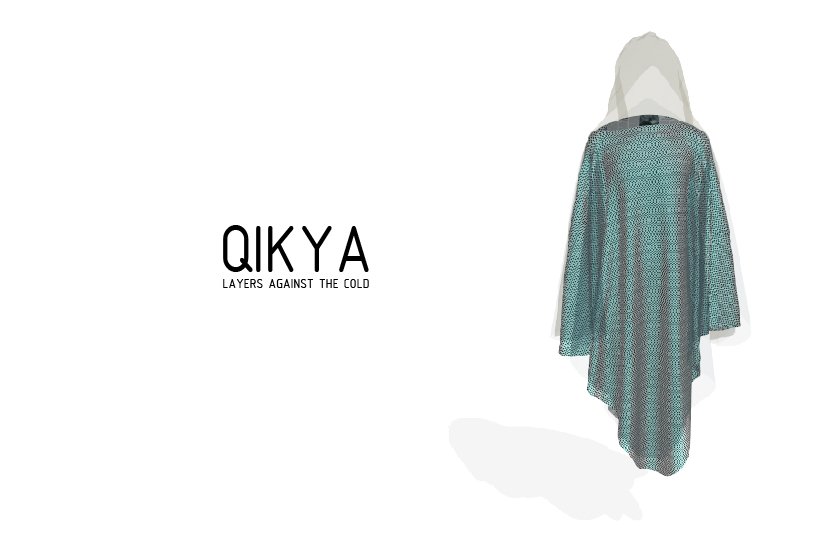
QIKYA by MD27 Arquitectos from peru
designer's own words:
QIKYA BY MD27 ARQUITECTOS
Every year, children and elderly people from poor villages located in the high mountains of South America die due to the increasingly cold conditions and the lack of primary needs for survival. This year a phenomenon called EL NIÑO, will strike Perú and South America, bringing these conditions to extreme levels.
Continuous exposure to freezing low temperatures can cause Hypothermia, therefore increasing the risk of developing mortal respiratory infections such as pneumonia.
QIKYA a multi-layer and multi-purpose blanket inspired in local and traditional materials, aims to offers a low cost warm garment designed to help the highlanders in different everyday situations, therefore anticipating the coming weather phenomenon.
LAYERS MATERIALS AND SETTINGS
Inspired by the original Poncho from the Andes, QIKYA’S triangular shape folds into place allowing free mobility and comfortable everyday use in cold weather. It is designed in different layers and materials, each one of them serving a purpose within the different weather scenarios and different human activities. QIKYA is comfortable to walk, work, relax and rest. It’s unique design also incorporates various compartments that can serve sitting or sleeping and others that can be stuffed with newspaper or alpaca wool to help with thermal insulation.
1. Waterproof
The outer layer of QIKYA, provides a waterproof material such as plastic made out of recycled plastic bottles. This translucent layer of fabric also serves as a hood when precipitation is as its strongest. When used as a seat or bedding, the waterproof layer helps keeping the user dry and away from humidity.
2. Insulation
Inflatable plastic compartments keep the body away from damp when in contact with the ground avoiding the cold surface. It also provides comfortable cushion when needed i.e. sleeping or sitting.
3. Thermal - Newspaper
Permeable fabric compartments stuffed with newspaper. This layer works as the blanket and it’s the first contact against your body allowing you to keep warm during long terms.
4. Thermal – Alpaca Wool
This extra layer works as a compartment layer that can be filled when needed. It can be stuffed with native materials such as Alpaca Wool (found in the area) providing extra warmth during the cold nights.
CONTEXT CONDITIONS
The configurations of QIKYA respond to the different needs and customs of people from the area.
Situations of poor people in the Andes:
· Lack of furniture (no bed, no chairs or place to seat)
· No flooring materials set over the ground to keep insulated from the humidity and cold of the soil.
FEATURES OF QIKYA
· By using QIKYA you are able to separate yourself from the surface using the inflatable plastic compartment giving you a piece of furniture and resting area.
· By unfolding QIKYA you can obtain a full size bed where you can also, by using the inflatable compartments, separate yourself from the ground keeping a steady body temperature.
· By stuffing QIKYA with low cost thermal materials found in the area, you can keep warm and be resourceful at the same time.
The Concept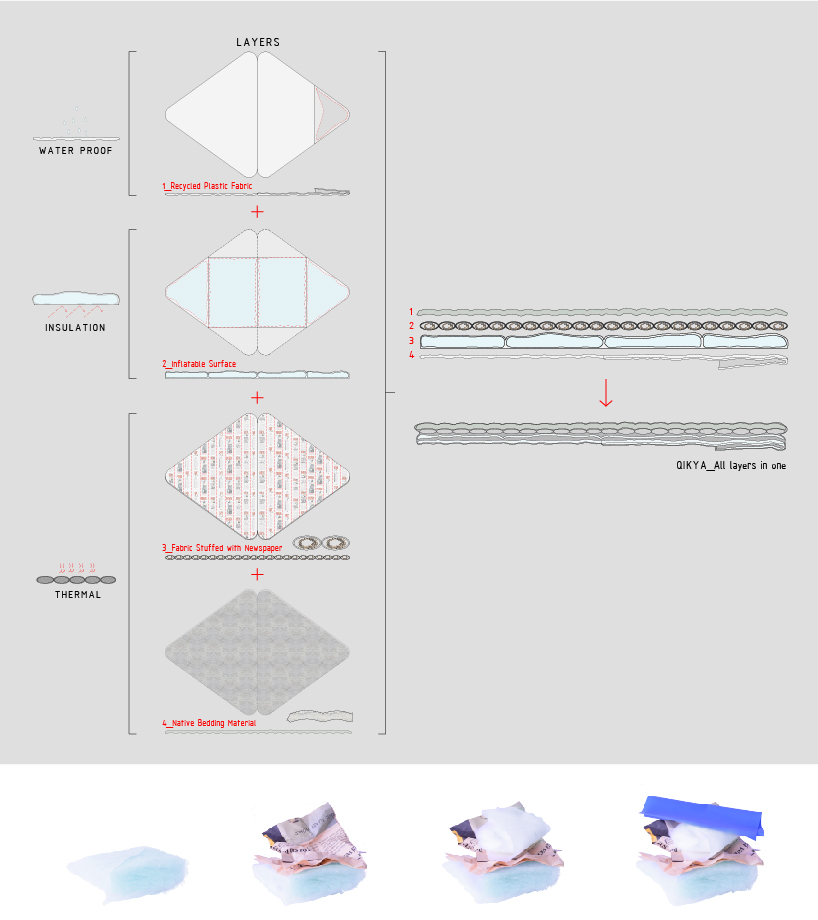
Layers and Materials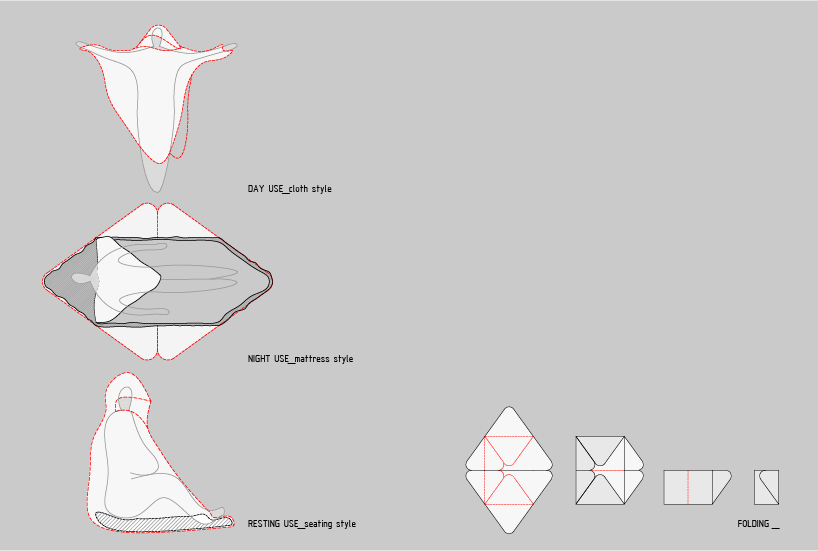
Scenarios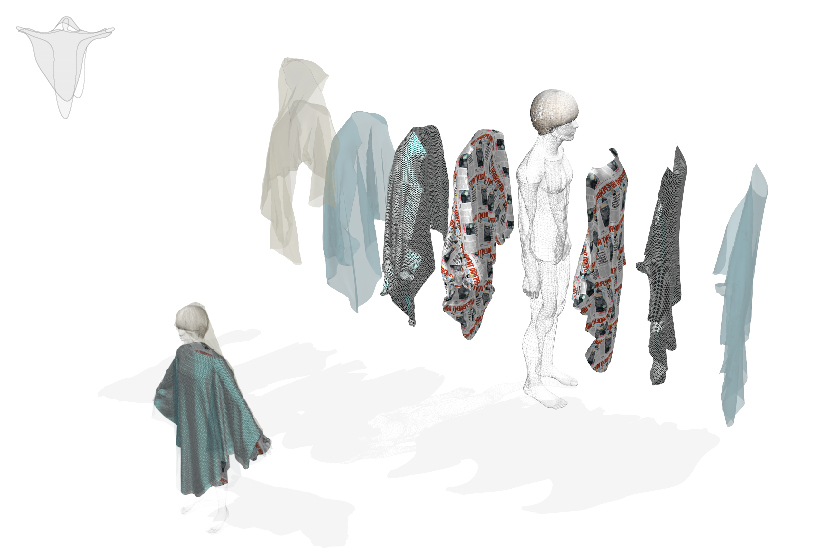
Overlay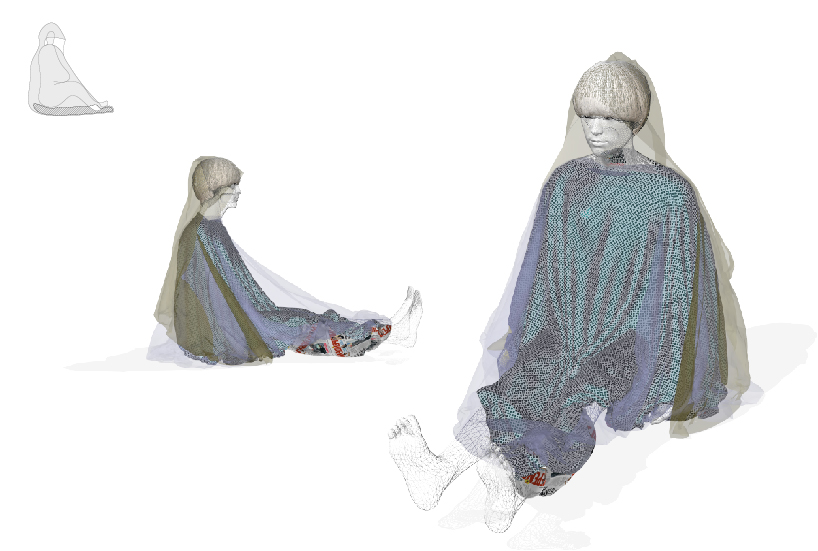
Qikya Sitting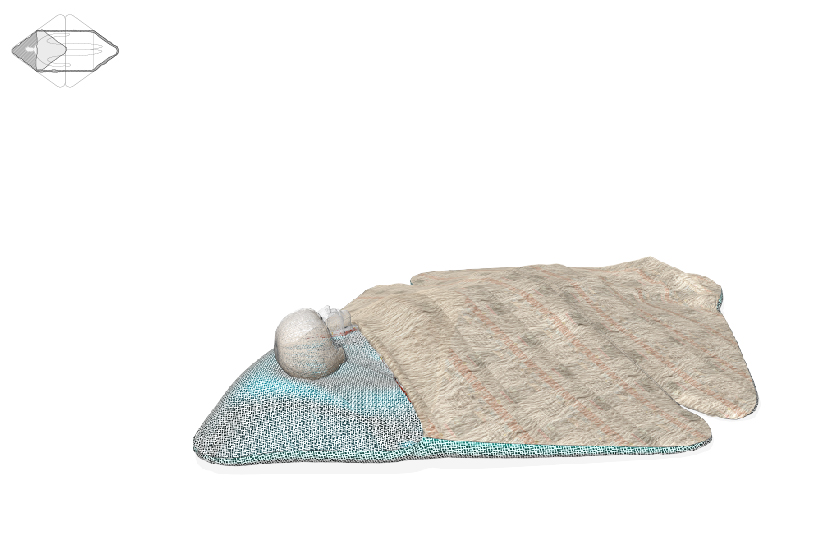
Qikya Sleeping